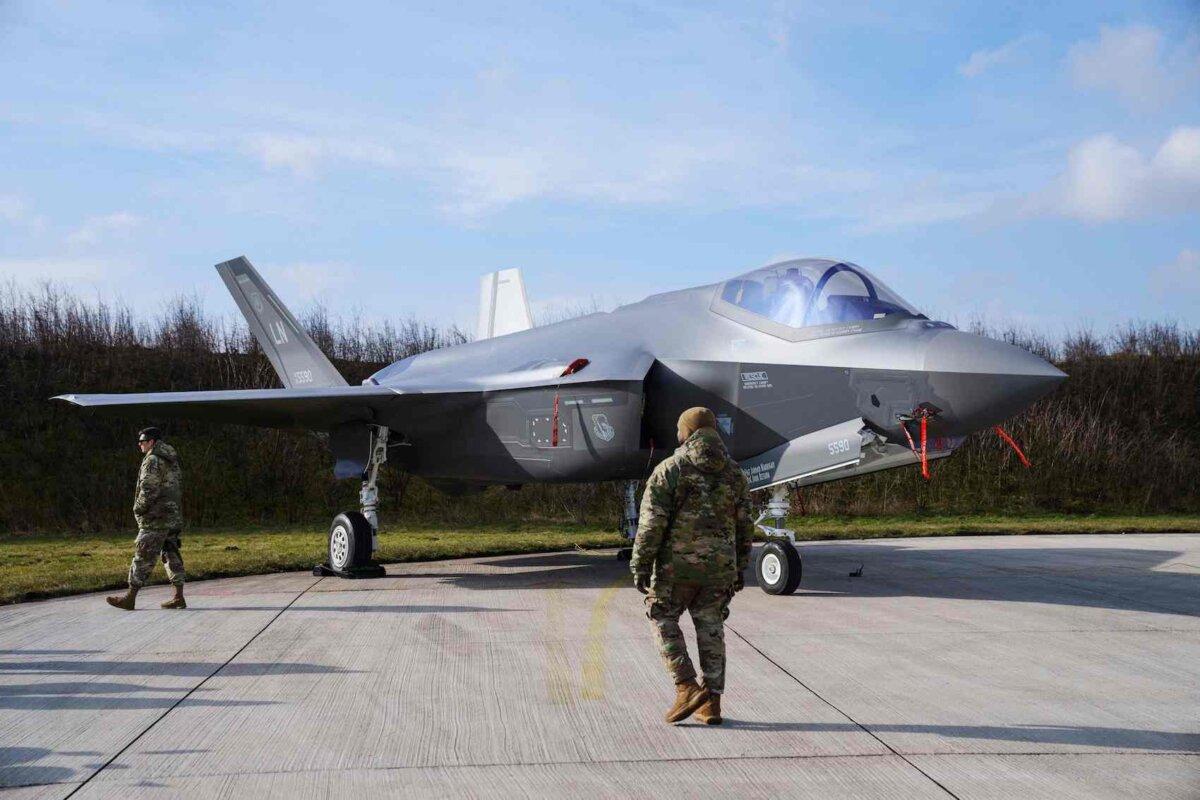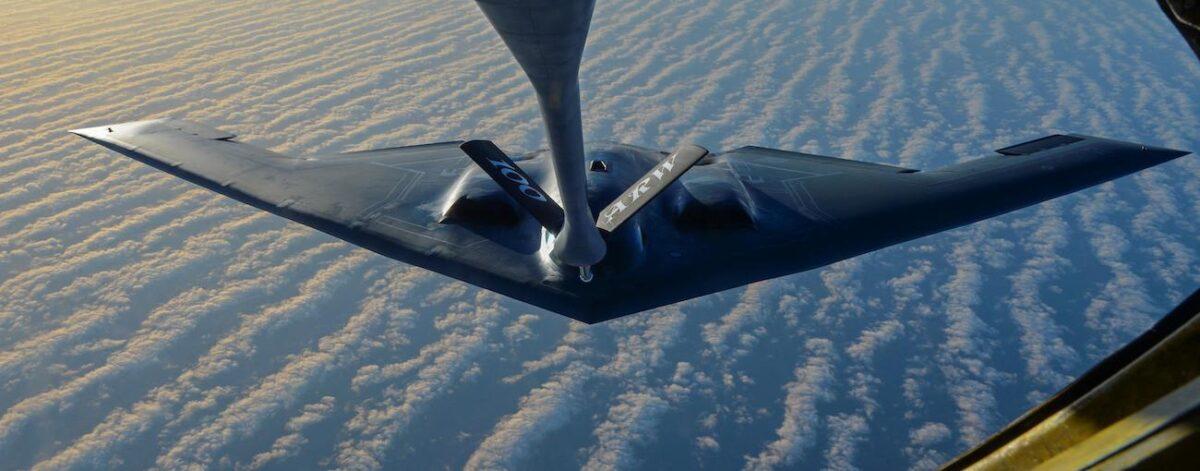Under near-$1 trillion spending plan, Air Force will retire 250 warcraft, including many fighters, while purchasing 60 new F-35s/F-15s, down from a planned 72.
President Joe Biden’s near $1 trillion defense budget request calls on the United States Air Force to continue retiring aging warcraft, but long production timelines, as well as a short budget leash, could create gaps in the delivery of their replacements, a “disconnect” being closely watched and, potentially, anticipated by “near-peer” adversaries Russia and, especially, China.
Under the budget request, the Air Force will divest 250 jets, which would bring the service to less than 5,000 aircraft, 54 fighter squadrons, and about 325,000 active duty personnel. In 1990, there were more than 600,000 serving in the Air Force, which had about 150 fighter squadrons.
And under the proposed FY25 defense budget request, that trend will continue, especially in fighter jets.
“While this budget request continues to focus and build upon the modernization called for by the operational imperatives the Air Force identified last year, our resources have been limited by the 2023 Fiscal Responsibility Act,” Assistant Air Force Secretary for Acquisition, Technology, and Logistics Andrew Hunter said.
“The Fiscal Responsibility Act’s caps increase our risk and force difficult tradeoffs.”
Budget Morass
The $883.7 billion FY24 defense budget, or National Defense Authorization Act (NDAA), was only adopted in December, two months after FY24 began Oct. 1, 2023.
Under FY24’s NDAA, the Pentagon’s top-line authorization is $841.1 billion, with $32.4 billion for Department of Energy (DOE) national security programs and $438 million for various departments and agencies for defense-related activities.
Congress has only adopted half the 12 spending plans that constitute the annual federal budget. With many FY24 budgets still being refined, Congressional committees, such as House Armed Services panels, are already reviewing FY25 plans, beginning with the first proposed budget traditionally introduced, the president’s defense spending request.
With July’s adoption of the Fiscal Responsibility Act (FRA), base FY24 discretionary spending was capped at $1.59 trillion. Under the FRA, base FY24 defense spending is capped at $886 billion, a 3-percent increase from FY23, and base non-defense spending is capped at $704 billion, up to a 9-percent decrease from FY23.
The FRA caps FY25’s defense top lines at $895 billion. As a result, instead of buying 107 fighter jets in FY25, the Pentagon will be buying 86 fighter jets, 21 fewer than projected, slashing planned buys of both Lockheed Martin’s F-35s and Boeing’s F-15EXs.
The Air Force planned to purchase 72 of the fighters, including 48 F-35As and 24 F-15EXs. Instead, its FY 25 budget request calls for 60 new fighters, 42 F-35As, and 18 F-15EXs. The Air Force has maintained for years it needs at least 72 new fighters a year to replace aging ones.
The Navy is also cutting back fighter purchases, citing FRA restraints. The Navy’s FY 25 procurement plan earmarked 25 F-35Bs and D-35Cs—16 F-35Bs and four F-35Cs for the Marines, and 15 F-35Cs for the fleet. However, under the FY25 budget request, the Marines would get 13 F-35Bs and four F-35Cs while the fleet would add just nine F-35Bs.
Air Force Deputy Assistant Secretary for Budget Maj. Gen. Michael Greiner told reporters on March 8 that FY25 would be the last year the Air Force purchases F-15EXs. There are 98 active across the service. The goal is 104.
The six-jet decline in the Air Force’s F-35 procurement is a deferral because demand for the joint-force fighter—now authorized to carry nuclear weapons—is not expected to change across the Air Force and Navy.

During spring and summer hearings, Congress could shift money around within the FRA’s limits or the services to additional fighters on its unfunded priority list. The reduced aircraft acquisition could also be addressed in a supplemental spending package.
That appears likely, with many on the subcommittee dubious that the retired jets can be replaced fast enough with F-35s and newer jets to be introduced over the next decade.
‘Disconnect’ Creating Gap
Rep. John Bergman (R-Mich.), a retired Marine Corps lieutenant general, said the winnowing numbers degrade the Air Force Reserve and Air National Guard in addition to active duty and questioned the “disconnect” between the FY24 and FY25 procurement plans, especially in the context of F-15EXs.
He said the FY24 NDAA “encouraged the [Air Force] to commit additional procurement of the F-15EX above [initial request] for the purpose of full recapitalization of the Air National Guard,” but that is no longer in the plan.
“We have no complaint about the Fiscal Responsibility Act,” Lt. Gen. Moore said, noting that 44 percent of the Air Force’s aircraft are operating beyond their original service spans and are more than 30 years old.
“But the fact of the matter is,” he continued, “it reduced our top line. And so, it would it would not be likely that we would see the ability to add additional procurement of F-15EXs, which is about $3 billion per squadron to procure, embed down and I think it’s unlikely that we will see additional F-15EXs in the Air Force’s budget.”

Noting the Air Force has maintained for years that it needs “at least 72 new fighter jets annually” to keep pace with China and Russia, Mr. Bergman asked if it was a temporary trim related to the FRA and if the service wants to restore the 72 fighters per year plan.
“We would like to do that.” Mr. Hunter said. “Our top line was simply lower than it was in Fiscal Year 24. We are still committed to those airplanes. We believed in them last year, we believe in them this year, but they don’t fit in the top line anymore. It’s unfortunately, it’s that simple. I wish that it were different, but it’s not.”
Looking ahead to next year’s FY26 defense budget deliberations, “it does not look any better than ’25,” Lt. Gen. Moore said. “So we’ll have to be cognizant of what the procurement profiles look like going forward in relation to that staying on track.”
Lt. Gen. Moore and Mr. Hunter expressed frustration with the FRA and Congress’s failure to adopt a budget on time.
“Funding through continuing resolutions [CRs] and restrictions on the retirement of outdated weapons systems also divert the focus from our military’s ability to deliver decisive combat power to achieve a more competitive posture for the great power competition that we currently face,” Mr. Hunter said.
While they can meet today’s operational demands despite CRs and the FRA, he said the ramifications of Congress failing to adopt timely budgets affect the research and development of weapons for tomorrow’s battlefields.
“We have absolutely lost time, and we’ve lost buying power, and we’re not going to get either one of those back,” Lt. Gen. Moore said. “It is imperative—I know that it’s not the direct work of this committee—but it is imperative that we have a budget and that we have it on time. By far, the salient feature of our ability to progress is the ability to have predictable funding that arrives on time.”
Original News Source Link – Epoch Times
Running For Office? Conservative Campaign Consulting – Election Day Strategies!


